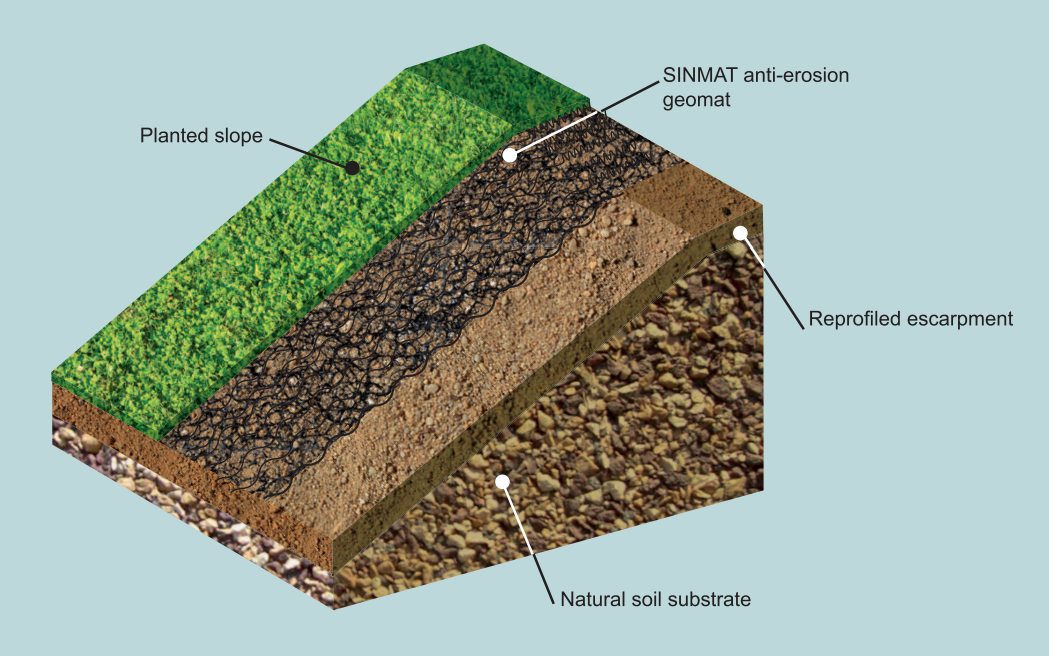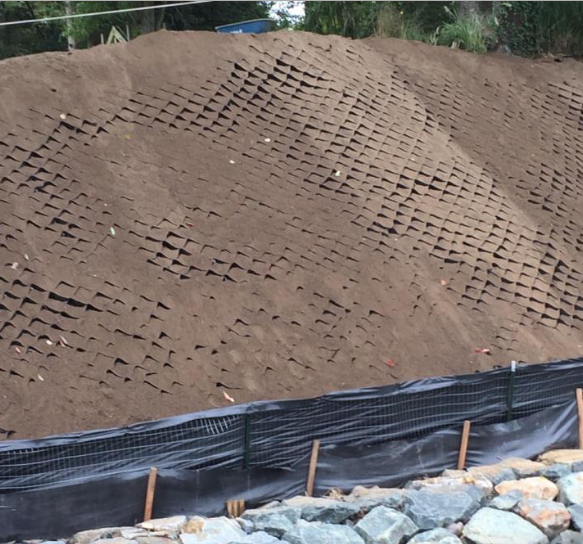Ideal Practices for Erosion Control in Construction Projects
Are you dealing with a building and construction project and worried about erosion control? Look no additional! In this short article, we will direct you through the very best methods for protecting against disintegration on your site. You'll uncover 5 vital methods, efficient debris and overflow management techniques, crucial considerations for slope stabilization, and tips for protecting plants and soil. We'll additionally dive into the significance of applying correct drainage systems. Obtain all set to take on disintegration head-on and ensure the success of your building task.
5 Important Disintegration Control Techniques

To efficiently manage erosion on your building and construction site, you'll require to execute essential methods such as slope stablizing and sediment control procedures. Slope stablizing is vital in stopping soil erosion on high slopes. You can achieve this by using approaches like terracing, which entails creating straight steps on the slope to slow down water flow and advertise the absorption of rain. An additional reliable strategy is making use of disintegration control coverings or mats, which are positioned on the slope and help preserve soil bits while permitting greenery to expand. Sediment control actions are also important to avoid sediment runoff right into close-by water bodies. One efficient method is the installation of silt fencings along the border of the construction site. These fences act as barriers, catching sediment-laden water and allowing it to clear up prior to it gets to the water bodies. Additionally, you can make use of debris basins, which are short-lived retention ponds developed to catch debris and allow water to slowly drain pipes off. Implementing these necessary disintegration control techniques will certainly assist lessen the adverse ecological impact of your building job and ensure compliance with guidelines.
Efficient Sediment and Runoff Administration

You can successfully take care of debris and drainage in your construction project by executing correct disintegration control procedures. Debris and drainage monitoring is essential to prevent disintegration and secure the surrounding setting. One reliable procedure is the setup of silt fencings along the perimeter of the building and construction site. These fences assist to contain sediment and avoid it from entering nearby water bodies. One more essential method is the implementation of erosion control coverings or mats. These blankets offer a safety layer on bare dirt, decreasing the influence of rains and protecting against disintegration. In addition, the use of debris containers or debris traps can help to capture sediment and avoid it from going into stormwater systems. Normal maintenance of these procedures is vital to guarantee their performance throughout the building job. This consists of examining and cleansing debris basins and frequently replacing silt fences and disintegration control coverings as needed. By applying these erosion control procedures, you can successfully take care of debris and overflow in your building project, decreasing the influence on the environment and following regulatory needs.
Trick Considerations for Incline Stabilization
When considering incline stabilization, it is necessary to analyze the surface and recognize possible areas of instability. You need to carefully check out the incline's attributes, such as its drain, structure, and angle patterns. Look for indications of disintegration, such as subjected roots, splits, or slumping soil. These indicators can provide you a concept of where stablizing steps might be needed.
Once you have identified the unpredictable areas, you can start implementing actions to stabilize the slope. One usual technique is the use of preserving wall surfaces or terracing to develop a collection of level steps, which can assist distribute the weight and protect against more disintegration. Another option is to plant vegetation on the slope, as the roots can aid secure the soil and control this contact form disintegration. Additionally, installing disintegration control coverings or mats can provide instant defense while plant life ends up being recognized.
It's essential to on a regular basis monitor the supported slopes to guarantee their efficiency. Watch out for any kind of signs of movement or erosion, and take instant action if needed. Routine upkeep, such as inspecting and repairing any damaged measures, is likewise vital to ensure lasting stability.
Ideal Practices for Plant Life and Soil Protection
One efficient method to shield greenery and soil on inclines is by routinely examining for indicators of erosion and taking prompt action if necessary. Beginning by inspecting the slope for any kind of signs of disintegration, such as exposed origins, bare soil patches, or debris accumulation at the base. Implement erosion control actions such as setting up erosion control coverings, mulching, or also building retaining wall surfaces if needed.
Applying Correct Drain Equipments
To efficiently apply correct drain systems, it's crucial to take into consideration the slope gradient and soil type. When it involves handling water flow and protecting against erosion, comprehending these aspects is important. The slope gradient plays a considerable duty in establishing exactly how water relocates across the land. Steeper inclines can cause quicker water circulation, enhancing the threat of erosion and flooding. On the other hand, gentler slopes allow water to move extra gradually, lowering disintegration possibility. By evaluating the incline gradient, you can create an efficient drainage system that fits the natural water motion.
Soil type additionally affects water drainage system style. Various dirt types have varying degrees of permeability, impacting just how water is taken in and drained pipes. As an example, sandy soils often tend to drain faster due to their rugged texture, while clay soils have a slower drain price due to their portable nature. Recognizing the dirt kind aids in choosing proper drain techniques, such as using permeable materials or setting up important link French drains. In addition, thinking about the soil qualities assists prevent waterlogging, which can lead to bad plant development and damage to frameworks.
Final Thought
In conclusion, when it comes to erosion control in building tasks, you should adhere to these ideal practices. Consider incline stablizing methods to ensure the stability of the website. By adhering to low maintenance bushes these important techniques, you can effectively control erosion and make certain the success of your building project.
To successfully manage disintegration on your building and construction website, you'll require to carry out vital methods such as slope stabilization and sediment control steps. Slope stabilization is essential in preventing soil erosion on steep inclines. One more effective technique is the use of erosion control blankets or floor coverings, which are placed on the slope and assistance keep soil particles while allowing vegetation to grow. An additional alternative is to plant greenery on the slope, as the roots can assist anchor the dirt and control disintegration. Implement erosion control procedures such as setting up erosion control coverings, mulching, or also creating retaining walls if needed.